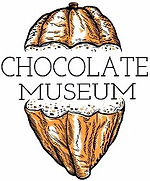
Make your children proud and share their artwork with us
on Instagram #ChocolateMuseumChallenge or
email us at info@thechocolatemuseum.co.uk

Week 3 - Drinking Chocolate
C for Cocoa, Criollo & Chilli
The hot chocolate we know and love today wasn’t always as delicious. In Aztecs Nahuatl language, It was called Xocoatl, and for good reason; it simply meant “bitter-water”. Served cold by the Mayans, and hot by the Aztecs, it was a mixture of water and crushed cocoa beans, flavoured with spices such as chilli & vanilla, and thickened with maize (corn) and seeds. A small amount of honey or agave could have been used to sweeten the drink. It was more of a tonic drink, which means it was believed to give the drinker strength.
Going back over 3000 years ago, urns in tombs have been found containing a dried cocoa mixture; the drink was only meant for kings, priests and warriors who were buried with their most precious relics. The drink was often present during birth and wedding ceremonies, but women were forbidden to drink it.
The cocoa tree that originated from the Amazon Rainforest was the
Criollo; fragile and more difficult to grow with a delicate cocoa flavour, it is still grown today in South America. There are two other main varieties of cocoa trees; the Forastero, mostly grown in Africa, known for its robustness and strong taste, and the Trinitario, initially grown in Trinidad, a hybrid of the former two, combining the best characteristics of both.
It was on his fourth journey that Christopher Columbus was made aware of cocoa beans being used as currency by the Aztecs, as he was trading goods at the time, but there is no mention anywhere of him tasting or trading with them.
Around 1600, Benedictine Monks in Mexico added cane sugar to the drink, and it was in 1606 that it was first introduced to the court of Spain. Milk was only added to the drink instead of water around 1650.
To download files
BUTTONS

.jpg)





